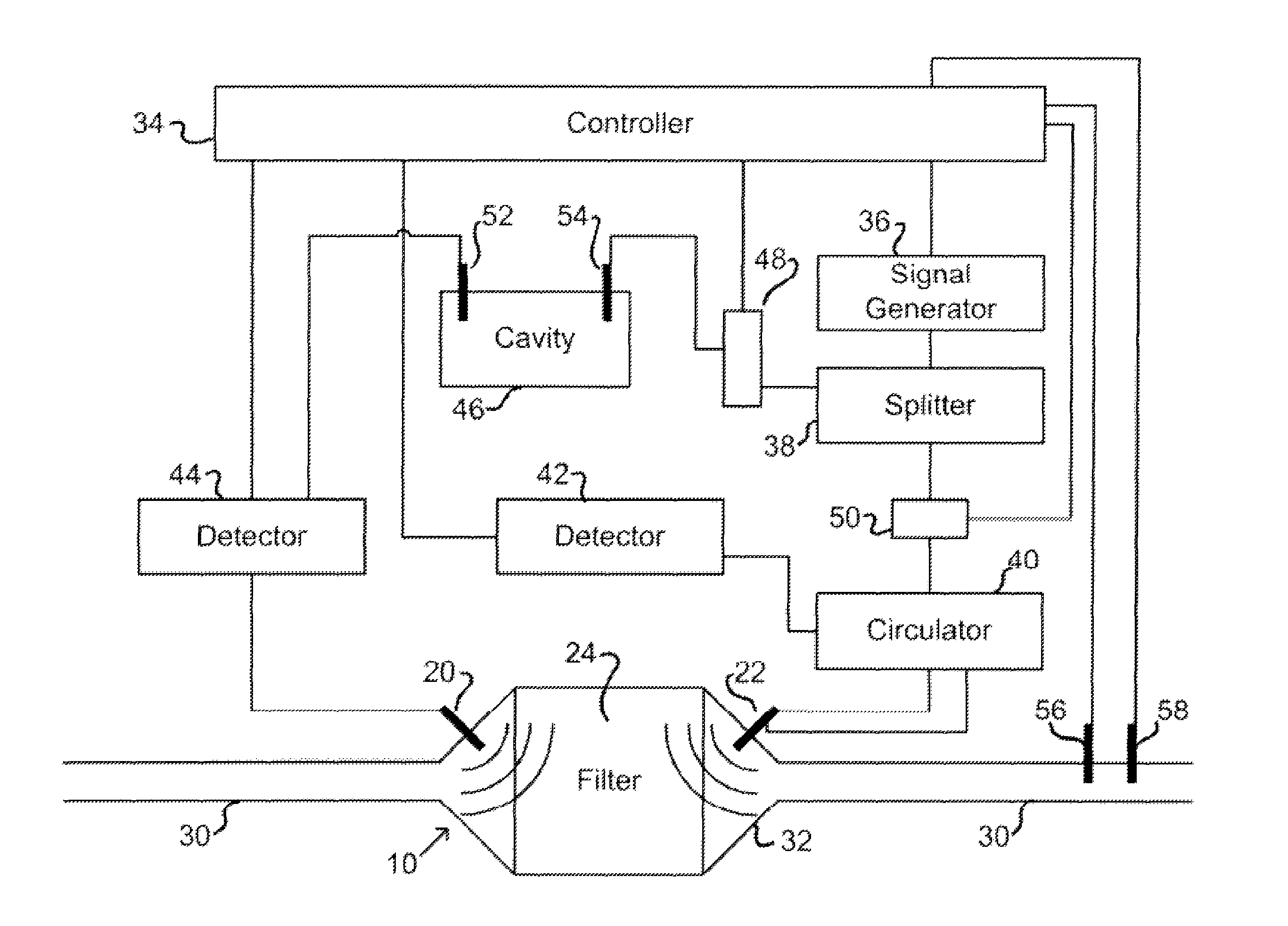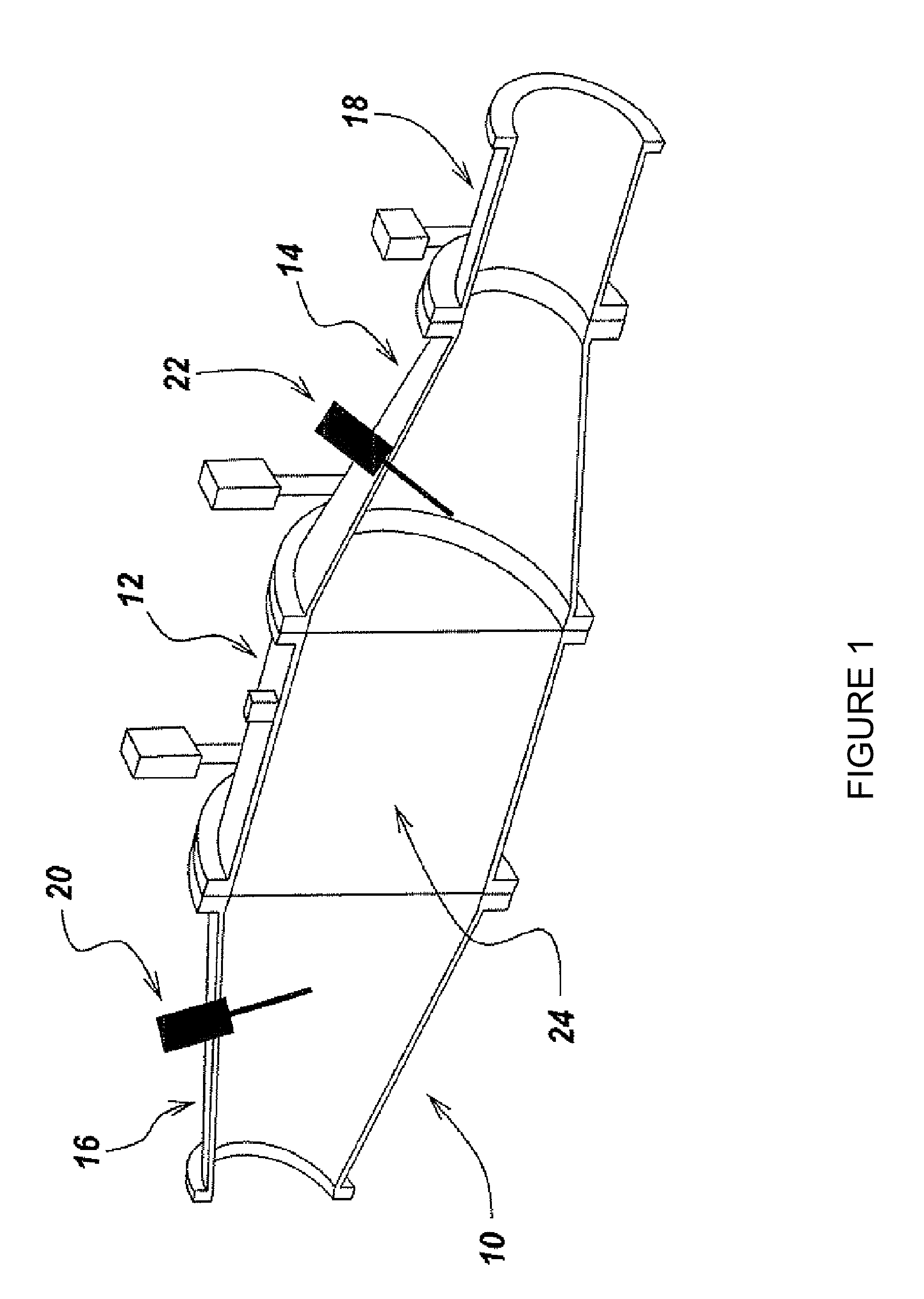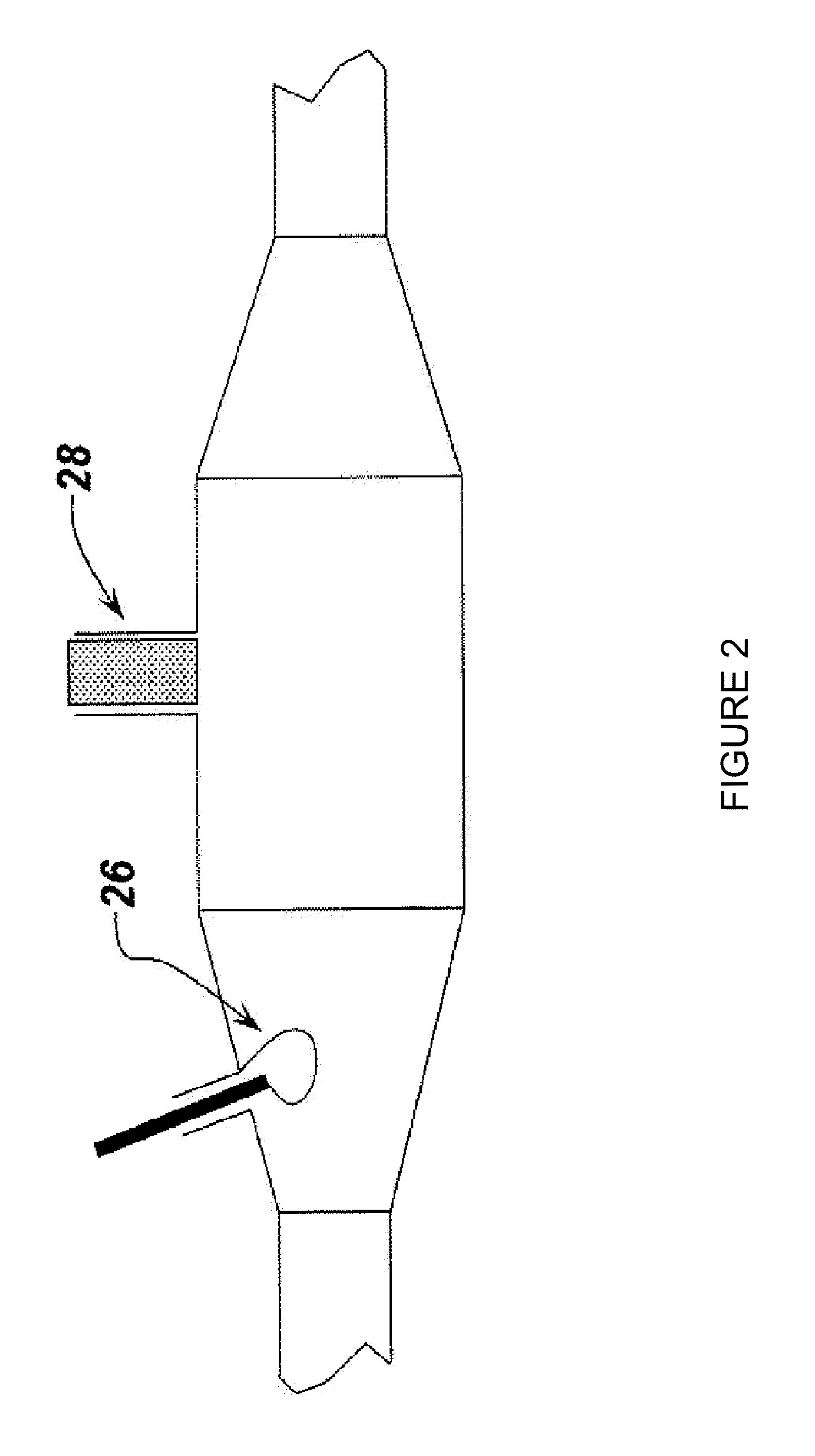System and method for measuring retentate in filters
a filter and retentate technology, applied in the direction of electrical control, separation processes, instruments, etc., can solve the problems of inability of systems which are not capable of detecting high soot loads, inability of prior art systems to monitor the spatial distribution of material accumulated in filters, and inability to detect high soot loads
- Summary
- Abstract
- Description
- Claims
- Application Information
AI Technical Summary
Benefits of technology
Problems solved by technology
Method used
Image
Examples
Embodiment Construction
[0043]The present invention is based on the recognition that microwaves can be used to determine the status of loading of traps or filters. The loading may be soot, particulates, ash or any solid / liquid. In addition to determining the total amount of loading, the microwave system to be described herein is useful in determining the distribution of the loading throughout the filter. The microwave sensing used in this invention can be inexpensive, as inexpensive oscillators and detectors in the frequency range of interest are commercially available.
[0044]In the case of a diesel particulate filter, the particulates are made from soot and other organic compounds (solid and / or liquid), and ash. For the purposes of this disclosure, the combination of carbon and organic compounds and will be referred to, for simplicity, as soot. Those of skill in the art will recognize that soot and organic compounds are removed through regeneration but ash loading will remain.
[0045]In addition, although th...
PUM
| Property | Measurement | Unit |
|---|---|---|
| dielectric constant | aaaaa | aaaaa |
| size | aaaaa | aaaaa |
| volume | aaaaa | aaaaa |
Abstract
Description
Claims
Application Information
 Login to View More
Login to View More - R&D
- Intellectual Property
- Life Sciences
- Materials
- Tech Scout
- Unparalleled Data Quality
- Higher Quality Content
- 60% Fewer Hallucinations
Browse by: Latest US Patents, China's latest patents, Technical Efficacy Thesaurus, Application Domain, Technology Topic, Popular Technical Reports.
© 2025 PatSnap. All rights reserved.Legal|Privacy policy|Modern Slavery Act Transparency Statement|Sitemap|About US| Contact US: help@patsnap.com



